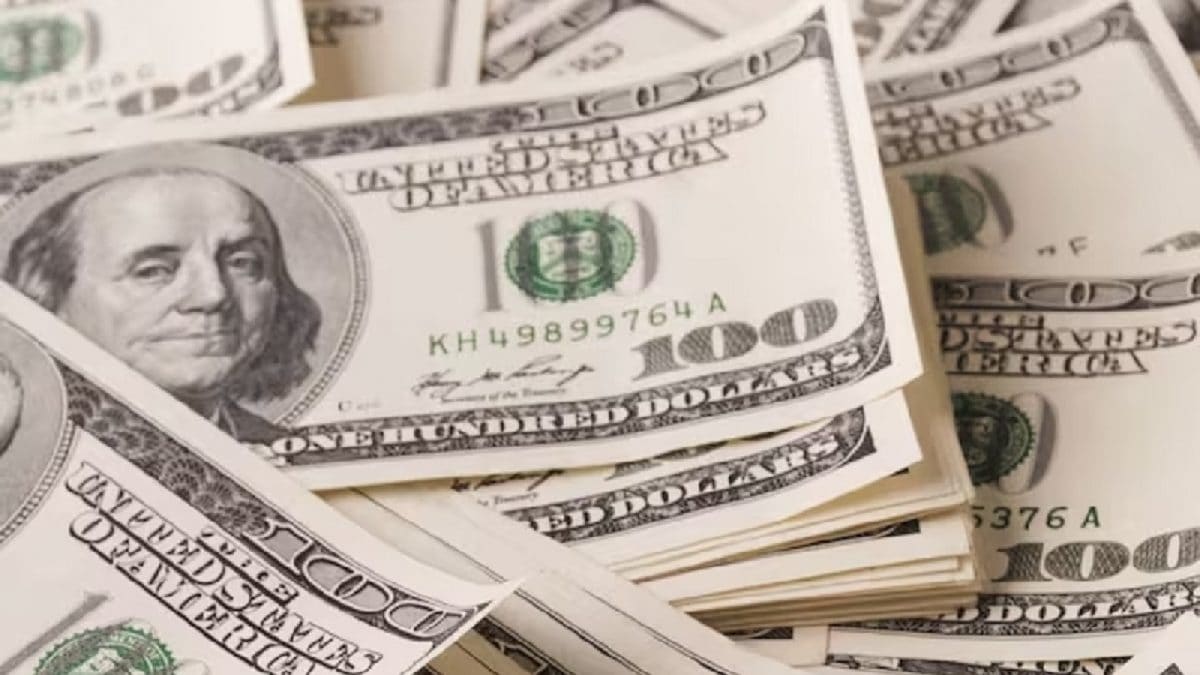Business
Restaurant Brands earnings top estimates, fueled by Tim Hortons and international growth

A general view of a Tim Hortons Drive-Thru coffeehouse and restaurant at Lakeside Retail Park on February 5, 2024 in Grays, United Kingdom.
John Keeble | Getty Images
Restaurant Brands International on Thursday reported quarterly earnings and revenue that beat analysts’ expectations, fueled by growth of its international restaurants and Tim Hortons.
Combined, the two divisions account for roughly 70% of the company’s earnings, according to CEO Josh Kobza.
Like many restaurants, the company has seen low- and middle-income consumers spend less on dining in recent quarters. Diners didn’t change their behavior in the third quarter, but executives credited sticking to their strategy and avoiding the so-called value wars for the company’s strong quarterly performance, particularly at Burger King’s U.S. restaurants.
“If you look at our results, we’re doing well despite some of those trends,” Kobza told CNBC.
Here’s what the company reported compared with what Wall Street was expecting, based on a survey of analysts by LSEG:
- Earnings per share: $1.03 adjusted vs. $1 expected
- Revenue: $2.45 billion vs. $2.4 billion expected
Restaurant Brands reported third-quarter net income attributable to shareholders of $315 million, or 96 cents per share, up from $252 million, or 79 cents per share, a year earlier.
Excluding transaction costs and other items, the company earned $1.03 per share.
Net sales rose 6.9% to $2.45 billion. The company’s same-store sales, which only track the metric at restaurants open at least a year, grew 4%.
Restaurant Brands’ international segment was the star of the quarter, reporting 6.5% same-store sales growth. That topped the StreetAccount consensus estimate of 4.4%. The company’s restaurants in Western Europe, China and Japan fueled the segment’s same-store sales growth, Kobza told CNBC.
Tim Hortons reported same-store sales growth of 4.2%. The Canadian coffee chain has been leaning more into food offerings to drive sales and traffic at its restaurants. Executives also said an improved iced latte is driving sales of cold drinks, which grew 10% in the quarter.
Burger King’s same-store sales increased 3.1%, showing that the chain’s turnaround strategy in the U.S. is paying off for the business. Burger King has focused on restaurant renovations and marketing based on core menu items like the Whopper to revive domestic sales. The remodeled restaurants are paying off for franchisees as well, which is lifting operators’ profitability, according to Burger King U.S. President Tom Curtis.
Looking ahead, the burger chain is planning to lean into “product elevation,” Curtis said in an interview.
“I think that’s important in an environment where you hear a lot about shrinkflation, and you hear a lot about cost cutting. So for us, we’re going to be zigging while others are zagging,” he added.
Popeyes was the only Restaurant Brands division to report same-store sales declines. The chicken chain saw its same-store sales shrink 2.4%. In recent quarters, it has struggled to keep up with rivals, particularly when it comes to competition for value-minded customers.
“I think what we want to focus on in the coming quarters is making even more progress on the operational side, in terms of the consistency of the guest experience that we’re delivering across the store base,” Kobza said.
Looking ahead, executives said Popeyes will also focus more on its core menu items after spending much of the last year highlighting innovations, like bone-in chicken wings.
Business
Supply ‘too reliant’ on one asset, says South East Water boss

Fiona Irving,South East environment correspondentand
Craig Buchan,South East
 BBC
BBCThe boss of South East Water has said the company is too dependant on individual facilities after a six-day supply failure affected thousands of people in Kent.
About 24,000 properties in and around Tunbridge Wells had no or low pressure tap water from 29 November until supplies returned to most on 4 December. For the next nine days, residents were told to boil the restored tap water before consumption.
A disinfection problem at Pembury Water Treatment Works had caused the failure but there was no evidence supply became infected, said South East Water.
The water company’s chief executive, David Hinton, said the firm was “just too reliant in some areas on one asset”.
Mr Hinton was speaking to the BBC earlier in the week and said the company wants to “do more” at a separate works at Bewl Water reservoir, near Wadhurst in East Sussex, and spend £30m on expanding output capacity.
The proposal would give the company the ability to “rapidly fill the area of Tunbridge Wells, for example, as soon as we see any issue”, said Mr Hinton.
He said this would allow “extra resilience should any other challenges hit any other treatment works” without further draining the reservoir.
“It’s not only for Tunbridge Wells, it’s for the wider parts of Kent as well,” added the chief executive, who has faced calls to resign over the supply issues.
South East Water was one of five companies to contest regulator Ofwat’s latest price controls, which already allowed it to increase an average annual bill from £232 to £274 by 2030.
The firms argued the 36% average price increase for customers in England over the next five years was not enough to deliver better infrastructure.
The Competition and Markets Authority has provisionally agreed that South East Water can increase bills by an extra 4%, pending a final decision in 2026.
Mr Hinton said the Bewl Water proposal was a reason why the company was asking the competition regulator to allow it to raise more money from customers.
South East Water suspects “something to do with the level” of water at its Pembury reservoir contributed to the supply failure but the firm wants to “do a full investigation”, he said.
The company introduced hosepipe restrictions in July for Kent and Sussex customers after dry weather earlier in 2025.
The Drinking Water Inspectorate said it was investigating the Tunbridge Wells loss of supply incident.
Business
GST notice: UltraTech Cement gets Rs 782 crore notice; company says it will contest – The Times of India

UltraTech Cement on Saturday said it has received a demand notice of Rs 782.2 crore from GST authorities and plans to challenge the order before the appropriate forum, according to PTI.In a regulatory filing, the Aditya Birla Group company said it is reviewing the order and considering all legal options. “The Company is reviewing the Order, considering all legal options, and accordingly would be contesting the demand,” UltraTech Cement said, PTI quoted.The demand pertains to the period 2018-19 to 2022-23 and has been raised on account of alleged short payment of Goods and Services Tax (GST), improper utilisation of Input Tax Credit (ITC) and related matters, the company said.UltraTech added that the order was passed “without due consideration of the Company’s submissions”.According to the filing, the order upholds a tax liability of Rs 3,90,95,58,194, along with applicable interest on the tax demand, additional interest of Rs 27,68,289, and a penalty of Rs 3,90,95,58,194.The company said the order was issued by the Joint Commissioner, Central Goods and Services Tax and Central Excise, Patna, on Friday.UltraTech Cement is India’s largest cement manufacturer, with a production capacity nearing 200 million tonnes per annum.
Business
India’s Forex Reserves Jump $1.7 Billion To $689 Billion, Gold Holding Up $758 Million

Last Updated:
The value of the gold reserves increased by $758 million to $107.741 billion during the week ended December 12, as per the RBI’s latest ‘Weekly Statistical Supplement’ data.

India’s Latest Forex Reserves.
India’s forex reserves (forex) jumped $1.689 billion to $688.949 billion during the week ended December 12, according to the latest RBI data. The value of the gold reserves increased by $758 million to $107.741 billion during the week.
In the previous reporting week, the overall reserves had increased by $1.033 billion to $687.26 billion.
For the week ended December 12, foreign currency assets, a major component of the reserves, increased by $906 million to $557.787 billion, according to the data.
Expressed in dollar terms, the foreign currency assets include the effects of appreciation or depreciation of non-US units, such as the euro, pound, and yen, held in the foreign exchange reserves.
The special drawing rights (SDRs) surged by $14 million to $18.745 billion, according to the Reserve Bank of India’s latest ‘Weekly Statistical Supplement’ data.
India’s reserve position with the IMF rose $11 million to $4.686 billion in the reporting week, according to the apex bank’s data.
The price of the safe-haven asset gold has been on a sharp uptrend over recent months, perhaps amid heightened global uncertainties and robust investment demand.
After the latest monetary policy review meeting, the RBI had said that the country’s foreign exchange reserves were sufficient to cover more than 11 months of merchandise imports. Overall, India’s external sector remains resilient, and the RBI is confident it can comfortably meet external financing requirements.
In 2023, India added around $58 billion to its foreign exchange reserves, contrasting with a cumulative decline of $71 billion in 2022. In 2024, reserves rose by just over $20 billion. So far in 2025, the forex kitty has increased by about $47-48 billion, according to data.
Foreign exchange reserves, or FX reserves, are assets held by a nation’s central bank or monetary authority, primarily in reserve currencies such as the US dollar, with smaller portions in the Euro, Japanese Yen, and Pound Sterling.
The RBI often intervenes by managing liquidity, including selling dollars, to prevent a steep depreciation of the rupee. The RBI strategically buys dollars when the Rupee is strong and sells when it weakens.
The Indian rupee has been under pressure for a host of reasons. It has already weakened by nearly 6 per cent this year on a cumulative basis.
December 20, 2025, 08:16 IST
Read More
-

 Business1 week ago
Business1 week agoHitting The ‘High Notes’ In Ties: Nepal Set To Lift Ban On Indian Bills Above ₹100
-

 Business6 days ago
Business6 days agoKSE-100 index gains 876 points amid cut in policy rate | The Express Tribune
-

 Business6 days ago
Business6 days agoStudying Abroad Is Costly, But Not Impossible: Experts On Smarter Financial Planning
-

 Sports5 days ago
Sports5 days agoJets defensive lineman rips NFL officials after ejection vs Jaguars
-

 Tech7 days ago
Tech7 days agoFor the First Time, AI Analyzes Language as Well as a Human Expert
-

 Business1 week ago
Business1 week agoIPO Explained: Meaning, Process, Benefits, Risks
-

 Business3 days ago
Business3 days agoBP names new boss as current CEO leaves after less than two years
-

 Fashion3 days ago
Fashion3 days agoIndonesia’s thrift surge fuels waste and textile industry woes











